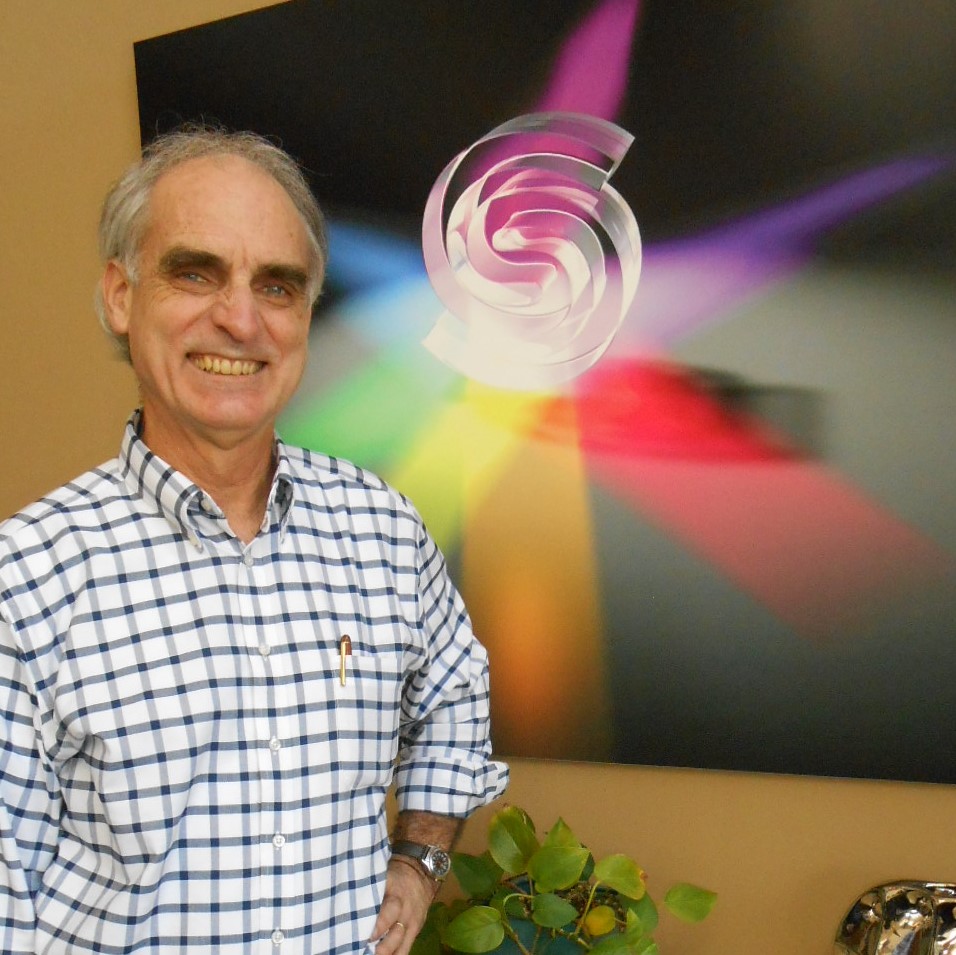Alan Petersen
Spectra-Physics, MKS Instruments, Inc., United StatesFor significant and innovative contributions to the design of commercial scientific and industrial UV laser systems and for long term service to the optics community.

Unlike many other recent Fellows, Alan B. Petersen's scientific achievements are tracked less in academic journals and more in the patent literature. Petersen, a senior scientist at Spectra-Physics/MKS for more than three decades, has amassed many US patents to his name, with others pending in the United States and other countries.
Petersen began his four-decade career working on infrared molecular gas lasers and progressed over the years to numerous improvements in ultraviolet lasers, from cavity design to fiber-coupled diode pumping. “I've actually managed to find a productive, satisfying niche where I am,” he says.
Growing up in the East Bay region of California near San Francisco, Petersen liked to tinker with radios and cars along with his father, who he thinks “was a frustrated scientist himself.” In high school, his chemistry teacher inspired him to perform complicated experiments. He heard of “funny stuff” going on in nearby Silicon Valley and thought that he might like to own an electronics business someday.
Petersen went to the California Institute of Technology (Caltech) to study electrical engineering, but switched his major to applied physics in order to avoid a mandatory class in technical presentations. “Boy, that was a mistake,” he says now. “I eventually learned that you can't recede into your little scientific hole and fail to communicate. Whether you're selling your idea to a funding agency or a conference or a customer, you have to give a good technical presentation. I don't have any fear of public speaking anymore, but getting that advice early on would have been pretty helpful.”
The Caltech campus attracted the brightest young minds and worked them hard. “Wow, I was gasping for breath, I found myself really challenged,” Petersen recalls. Toward the end of his undergraduate career, he went for long walks to ponder his options. In those days, most Caltech undergrads went straight to graduate school. He told himself, “I’m just getting control of some ideas. I can't quit now,” and went on to the University of Southern California (USC).
Petersen was the first doctoral student of Curt Wittig, who was then in USC's electrical engineering department. Wittig had invented the continuous-wave carbon monoxide chemical laser in 1969, though his interests gradually evolved toward fundamental studies of molecules and he eventually joined the chemistry department.
After completing his PhD in electrical engineering in 1977, Petersen took a postdoctoral fellowship under Ian W.M. Smith at Cambridge University in England. Wittig had been one of Smith's postdocs just a few years earlier. Smith, as Petersen recalls, was a clever physical chemist who could get excellent results with minimal laboratory equipment. In addition to scientific productivity, Petersen found love in England: he met his future wife.
Next, Petersen accepted an assistant professorship at the University of Illinois, but he began to question his career path. After living in California and the United Kingdom, he felt a bit of culture shock in the Midwest. And his soon-to-be wife had a faculty position in California. Rather than let himself get heavily invested in Illinois, he left that position and headed out to the Golden State to seek whatever employment he could find. He landed at Spectra-Physics in Silicon Valley and has worked at the company ever since.
“The nice thing about working at a for-profit laser company is that everybody knows what pays the bills,” Petersen says, adding that he and his colleagues take pride in seeing the equipment they develop find application in science and industry.
Although Petersen belongs to several professional societies, he says OSA most closely aligns with his interests. He has reviewed numerous OSA journal articles, served on CLEO and other committees, and now co-chairs the sources program committee for OSA's Advanced Solid State Lasers conference.
In the early days of lasers, when they were still uncommon instruments, researchers often cited the specific model number of their device. Now the devices are often taken for granted in scientific experiments, but Petersen is grateful for the role he's played in the evolution of that mindset. “I go home every night knowing I'm making a contribution to bettering the world,” he says.
Profile written by Patricia Daukantas, Science Writer/ Editor
